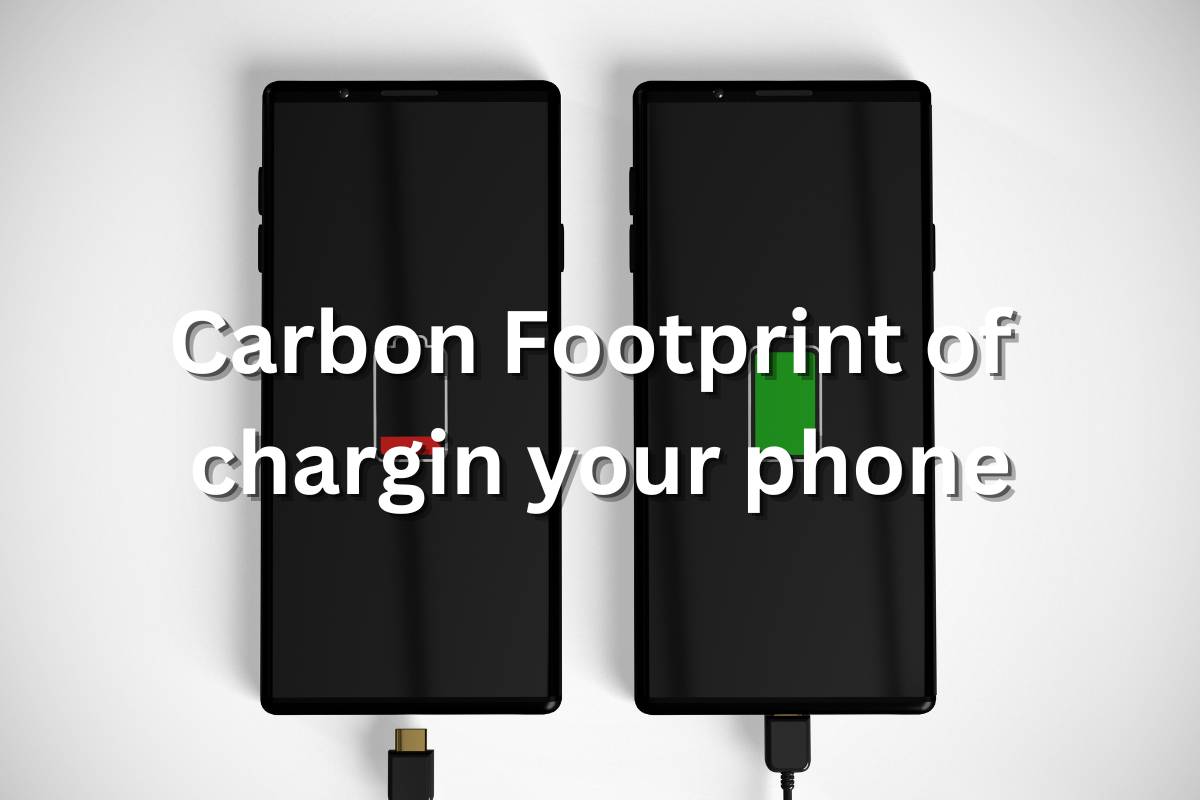Charging a smartphone typically produces about 8 kg (17.6 lbs) of CO2 greenhouse gas emissions over its lifetime. This is a small fraction compared to the emissions generated during the phone’s manufacturing process.
Factors Adding to the Carbon Footprint
The carbon footprint of charging a smartphone is influenced by several key factors. The primary contributor is the source of electricity. Charging with electricity generated from fossil fuels like coal or natural gas results in higher CO2 emissions compared to renewable sources such as solar or wind power.
The frequency of charging impacts the carbon footprint, with more frequent charging leading to increased emissions. This frequency is influenced by user habits and the battery life of the smartphone.
Battery Capacities and Carbon Footprint
Here is a table comparing common smartphone battery capacities and their associated carbon footprints for a full charge:
| Battery Capacity (mAh) | Carbon Footprint per Charge (g CO2e) | Carbon Footprint per Charge (oz CO2e) |
|---|---|---|
| 2000 | 3.4 | 0.12 |
| 3000 | 5.1 | 0.18 |
| 4000 | 6.8 | 0.24 |
| 5000 | 8.5 | 0.30 |
Interesting Facts
- Production Dominance: The majority of a smartphone’s carbon emissions occur during production, not during its usage.
- E-Waste: Many unused smartphones sit in drawers, wasting valuable materials.
- Longevity Impact: Extending a phone’s life by just one year can significantly reduce its overall carbon footprint.
- Usage Impact: Despite low energy use for charging, the infrastructure supporting smartphones adds to their carbon footprint.
Tips to Reduce the Carbon Footprint of Using a Phone
- Extend Lifespan: Use your smartphone for as long as possible before upgrading.
- Buy Refurbished: Consider purchasing refurbished phones to reduce demand for new ones.
- Recycle Properly: Ensure old phones are recycled properly to recover valuable materials.
- Keep your Lithium battery between 20-80% this will prolong the life of your battery and phone significantly
FAQ
How much energy does it take to charge a phone?
The energy required to charge a smartphone depends on its battery capacity and the efficiency of the charger. On average, charging a smartphone consumes about 5 to 10 watt-hours (Wh) of electricity. For example, a smartphone with a 3000 mAh battery and a voltage of 3.7 volts would typically need around 11.1 watt-hours for a full charge, but due to inefficiencies, the actual consumption might be slightly higher. This means that if you charge your phone every day, you would use about 3 to 4 kWh of electricity per year.
Do phones use a lot of electricity?
Smartphones do not use a significant amount of electricity compared to other household appliances. Charging a phone every day consumes about 3 to 4 kWh annually. In contrast, a refrigerator can use around 600 kWh per year, and a television can use about 100 kWh per year. Therefore, while charging your phone contributes to your electricity bill, it is a relatively small part of the total energy consumption in a typical household.
How many watts does it take to charge a phone to 100%?
The power required to charge a smartphone depends on the charger and the phone’s battery capacity. Standard chargers usually provide about 5 watts (5V, 1A). If you have a 3000 mAh battery, it would take about 2 hours to charge fully with a 5-watt charger, consuming around 10 watt-hours of energy. Fast chargers, which can deliver 18 watts or more (e.g., 9V, 2A), can charge the phone quicker but may still use a similar amount of energy due to the higher power delivered over a shorter period.




